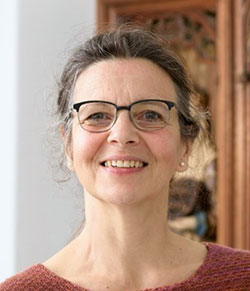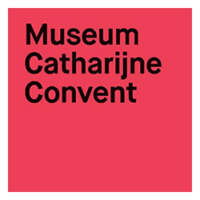HOME > VISITING > STUDY DAY ‘GOLD’ > ALETH LORNE

Aleth Lorne

Aleth Lorne is an independent conservator of polychrome sculptures.
She studied in Paris at Sorbonne University, first History and then Conservation of Cultural Heritage. Shortly after she settled in The Netherlands where she has now been working for 30 years.
Next to conservation of sculpture for museums and churches in The Netherlands, she conducts technical research on medieval sculpture. Her main study topic is the relationship between light, shape and polychromy. She gives lectures and writes articles on this subject.
Purchase your tickets online!
Book your tickets quickly and easily online.
About the lecture
Illusion of depth and gilding techniques in the Coronation of the Virgin Altarpiece at Castle Huis-Bergh.
The figures of the Coronation of the Virgin altarpiece, in the collection of Castle Huis-Bergh, were produced in Germany in the early 16th century. They were carved in the high relief technique in limewood blocks that are only 12 centimetres deep. Although the case is a neo-gothic reconstruction, the carving and the gilded surfaces of the sculptures have remained in a rather original condition.
The materials and techniques of the 16th century figures were thoroughly investigated prior to their conservation and restoration treatments in 2021-2022. The appearance of the large gilded surfaces raised interesting questions. At first sight they seemed to be harmoniously aged. However, further investigation and comparison with well-studied cases of early 16th century polychromy from the Low-Countries brought evidence that the aged appearance of the gilding consists of deliberately created effects which are original. The aged appearance of the materials, if intended, was probably not an end in itself but a means to produce colour and sheen gradations that would be perceived as perfectly natural. Together with discretely painted cast shadows which were also identified, the nuances of the seemingly aged gilding form a coherent system that creates an illusion of depth in the shallow carvings.
The presence of shading, colour and sheen gradations in late gothic gildings sheds new light on the representation of space in the late gothic sculpture. The lecture aims to raise awareness of the urgent need to implement art historical and technical study on this subject. As a matter of fact, the mentioned technical effects meant to enhance the perception of space are usually interpreted as later interventions or decay by conservators. Still today, the confusion between original techniques, decay and 19th century restauration practices leads to excessive cleaning of gilded or painted surfaces on sculptures, to the detriment of their spatial perception.
Purchase your tickets online!
Book your tickets quickly and easily online.
SPLENDID HOSPITALITY
Give your guests a royal welcome at Huis Bergh Castle in ‘s-Heerenberg, with flags flying, a royal reception on the drawbridge and a warm welcome in the majestic entrance hall.



